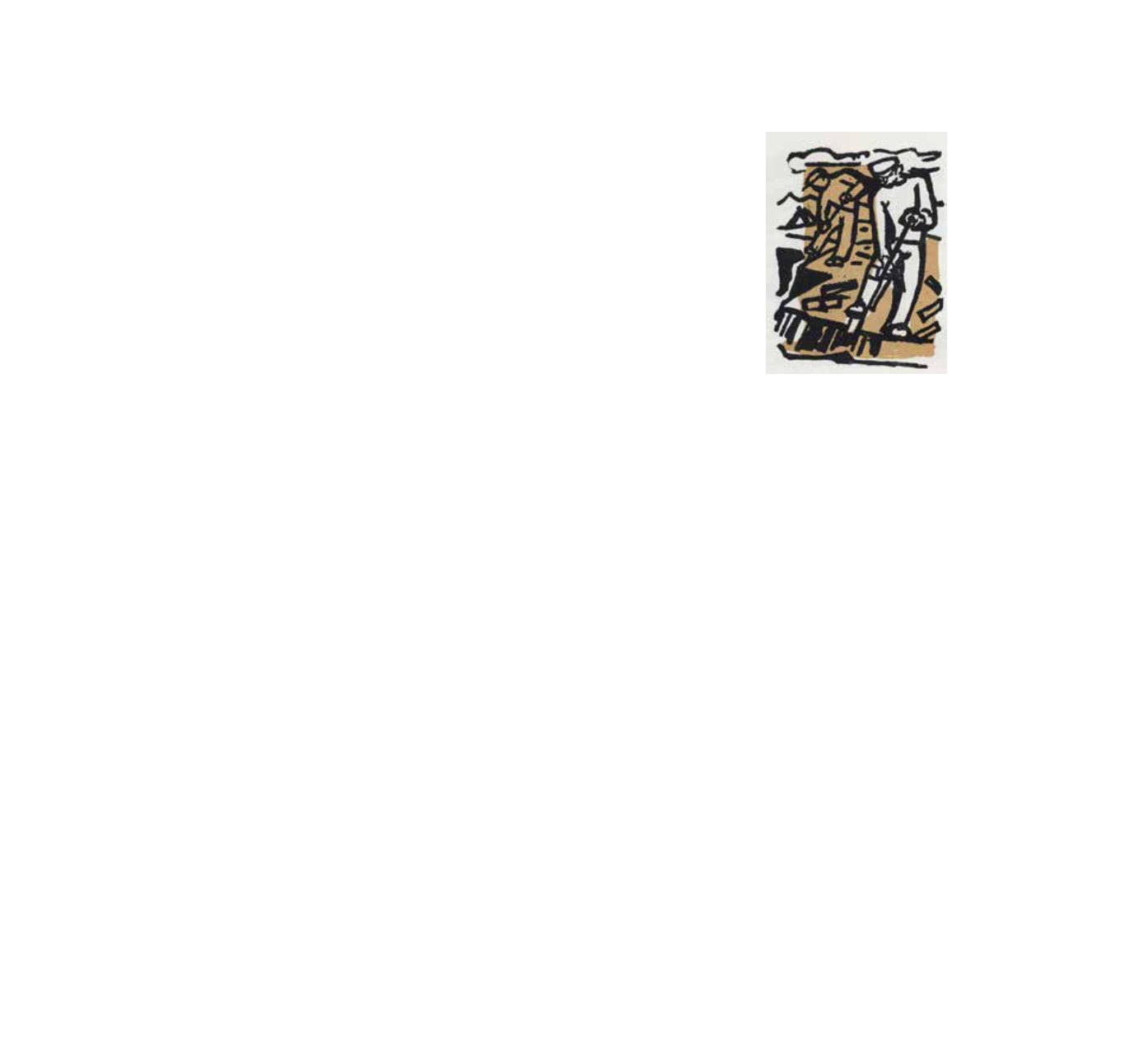
74
44
Gerard Dillon (1916-1971)
Footing the Turf
Oil on board, 38 x 47cm (15 x 18½”)
Signed
Provenance: From the Collection of George and Maura McClelland and on loan from them to
IMMA from 1999 - 2004; Private Collection, Dublin
Exhibited: Gerard Dillon Retrospective, Droichead Arts Centre, Drogheda, Jan-Feb 2003;
Art Tank Gallery, Belfast, Feb-Mar 2003, Cat. No. 10
“Northern Artists from the McClelland Collection”, IMMA, Dublin, 2004-2005
and toured afterwards to Droichead Arts Centre, Drogheda, 2005
“Ulster Artists Exhibition”, AVA Gallery, Clandeboye, April 2010, Cat. No. 12
“Gerard Dillon: Art & Friendships”, Adam’s, Dublin, July 2013 and AVA Gallery,
Clandeboye, August 2013, Cat. No. 62
Literature: “Ulster Artists Exhibition, 2010, illustrated page 13
“Gerard Dillon: Art & Friendships”, 2013, illustrated page 67
€30,000 - 50,000
The subject of bogs, peat stacks and turf cutters in Connemara was a favourite theme with Northern painters, Charles
Lamb, Paul Henry, Frank McKelvey and James Humbert Craig. Engaging with the local people, the artist’s biographer
James White remarked on the artist’s naïve style, “he cultivated simplicity and a love of childhood openness and honesty…
and…he wanted to paint with a child’s directness.”
This image depicts four men in a Connemara bog during the various stages of the turf drying process. A group of men
sometimes worked as a team to open a bank removing vegetation from the surface of a bog. In Connemara, the turf was
normally cut vertically downward and “underfooting” on deeper bogs, where a team of men worked together, turf may have
been cut horizontally known as “breasting”. In the foreground, a barefoot man sits on a Connemara pony near a red cart.
One man is cutting the soft bog with a
‘sleán’
and beside him another man is picking up the sods and standing them upright
into little stacks of five or six sods. This process was known as ‘footing the turf ’. Shrinkage occurred when the water
evaporated and a hard skin formed on each sod making them easier to handle.
A ‘
sleán
’ or ‘slane’ symbolizes the ancient tradition of cutting turf by hand. The spade had a long blade roughly four inches
wide and an extra little blade sticking up at right angles from its left hand edge.The men may have agreed to ‘foot’ the turf
in pairs allowing the other pair to take a rest. Two of the group appear to be in a supervising role or may be teaching the
method to younger men. Any dried turf would have been transported by cart to their homes to be stored in sheds or built
skillfully into a neat mound known as a ‘clamp’.
Cutting, storing, and transporting turf by cart and pony were commonplace in Connemara in the 1940’s and 50’s until
the slane was replaced by mechanization. The sea and land in the distance is a reminder that the islands dotted along the
coastline relied on these men for their fuel during the winter.
Throughout the 1950’s, Gerard Dillon wrote and illustrated for the magazine,
Ireland of the Welcomes (
see image). He re-
corded a time in the West of Ireland, when lives were non political and uncomplicated, but more recently the balance of the
bog land as a priority habitat, and the fuel and income needs of the people continues to be debated today.
Karen Reihill
Currently researching Gerard Dillon & Friends.


